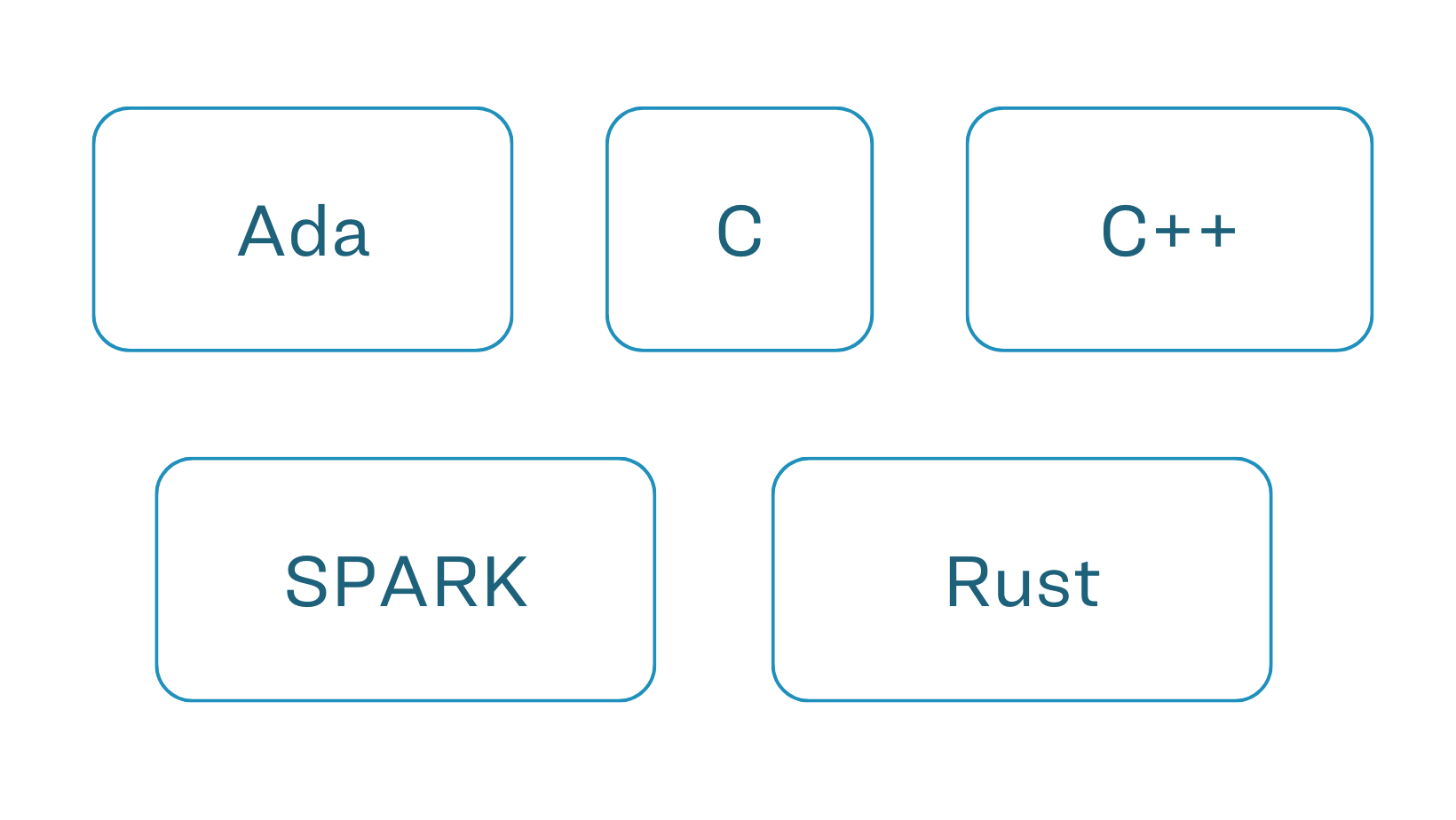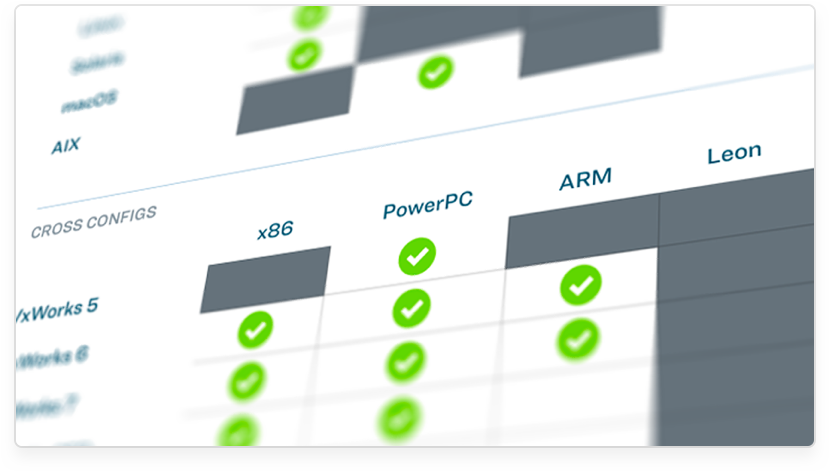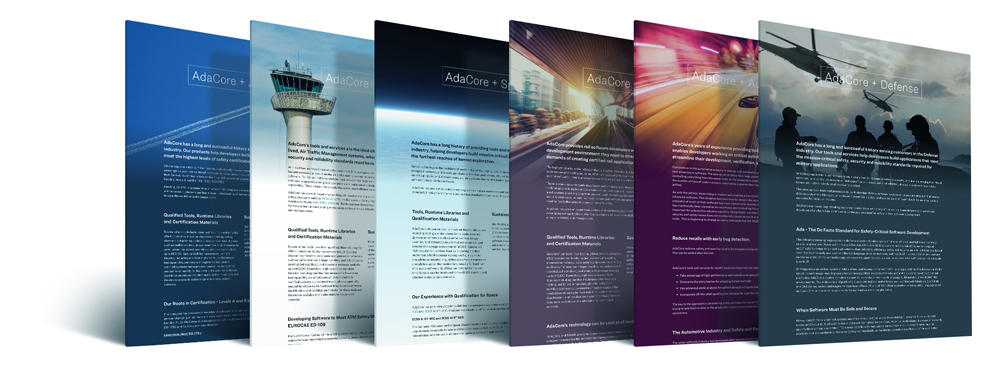Press Center
Quicklinks
The Latest
Helping People Build Software that Matters
At AdaCore our mission is to provide the best tools, services and expertise to developers who want to build safe and reliable software. Learn more about AdaCore »
Code Development
The GNAT Pro product line offers a comprehensive toolset for Ada C, and C++. Different versions of the product — GNAT Pro Assurance and GNAT Pro Enterprise — support a wide range of project sizes and needs.
Static Analysis & Testing
Use Defects and Vulnerability Analysis to detect logic errors and vulnerabilities both during development of new code and retrospectively on existing codebases. Or tap into formal methods, test case generators; and source and object code coverage analyzers.
Formal Verification
With the SPARK Pro integrated static analysis toolsuite you can verify high-integrity software through formal methods, proving properties such as absence of run-time errors.
Certification & Qualification
Our qualifiable tools and high-integrity run-time libraries support software standards such as DO-178B/C, EN 50128 and ECSS-E-ST-40C / ECSS-Q-ST-80C.
Languages
We provide tools and support for the primary languages used in high-integrity development.

Read about AdaCore's Language Support »
Platforms
We can assist our customers through hardware and OS evolution, facilitating code portability across an extremely wide range of platforms.

View our Supported Platforms »



